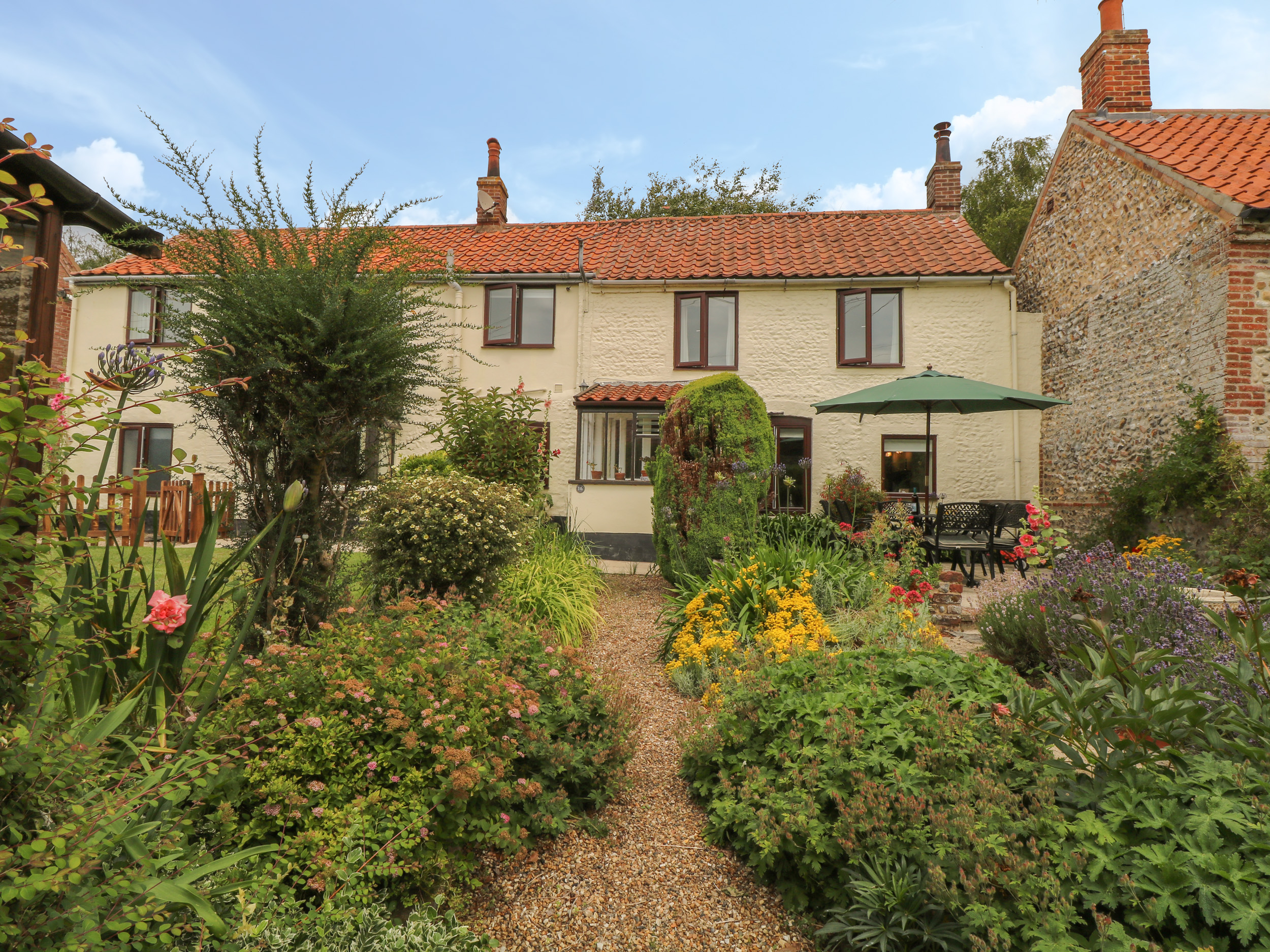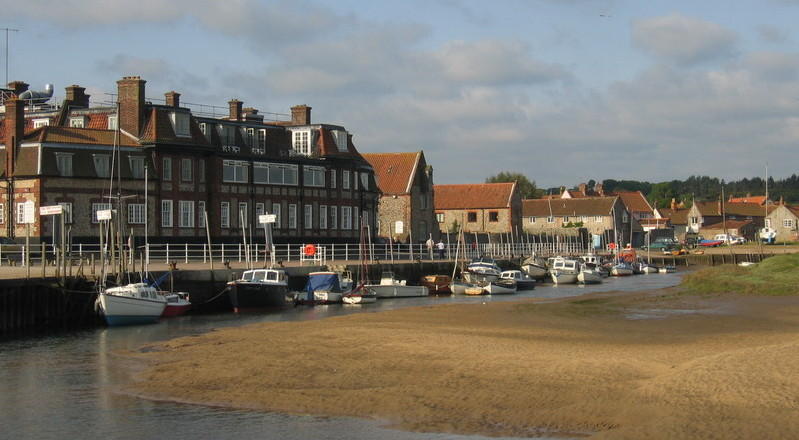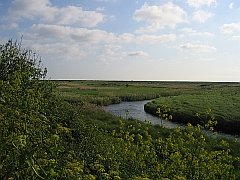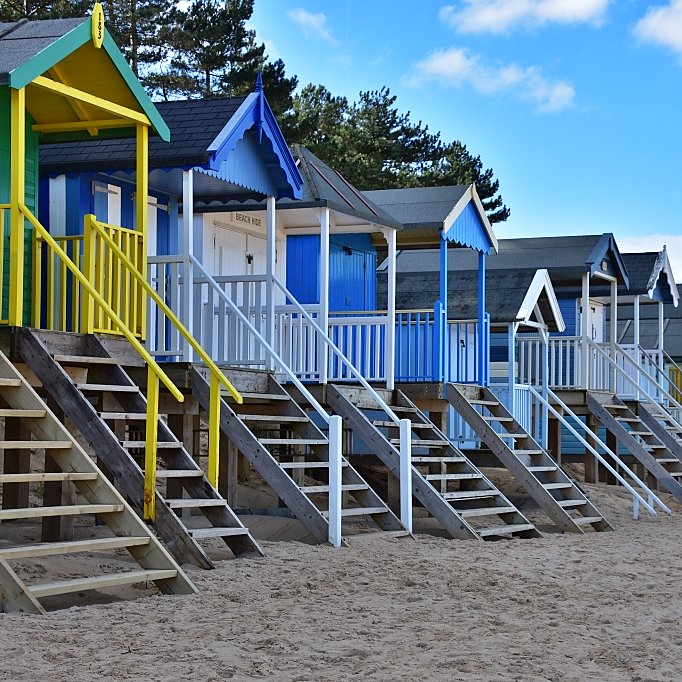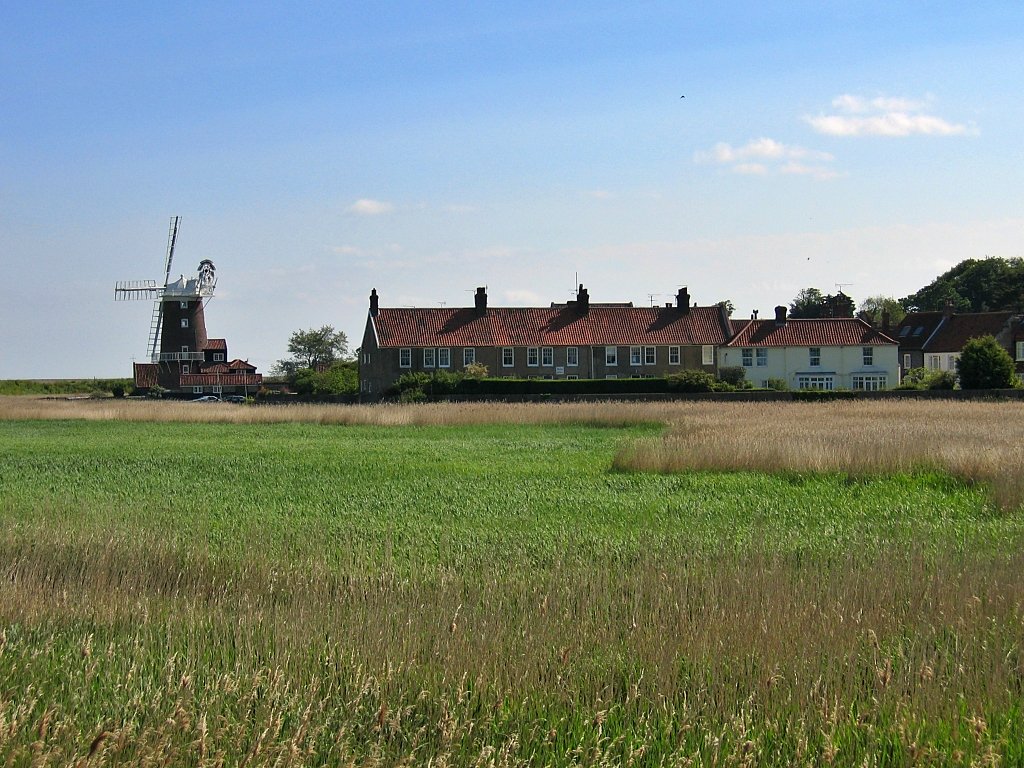Oxburgh Hall
Our first view of Oxburgh Hall was during a tandem ride starting from Castle Acre that passed through Swaffham, Cockley Cley, Oxborough, and Narborough. It was a warm summer day and as we reached Oxborough we stopped to look through the gates at Oxburgh Hall. It was an imposing sight, as the view was straight down to the gatehouse tower - and we immediately added a visit to our to do list.
Delayed until our next annual Norfolk holiday, we once more arrived at Oxburgh Hall on a fine, sunny day. We weren’t disappointed either, as the hall looks even more impressive close up. From the gateway by the road, one really can't appreciate how grand the building is and how it sits so neatly in the lovely moat. This was all pre-Essentially England days, so we enjoyed exploring the site without a thought to photos, quirky details, or even proper historical information! In fact, when we made lists of places we'd already seen and could write about, we found we had only one photo of the Hall surrounded by the moat - and the Hall was covered in scaffolding!
In our opinion, Oxburgh Hall deserved a proper Essentially England day out, so we waited patiently for the major roof restoration project to be completed. The National Trust completed this extensive, £6 million pound project in 2022, and so, on a fine February morning in 2024, we set off for another encounter with Oxburgh Hall.
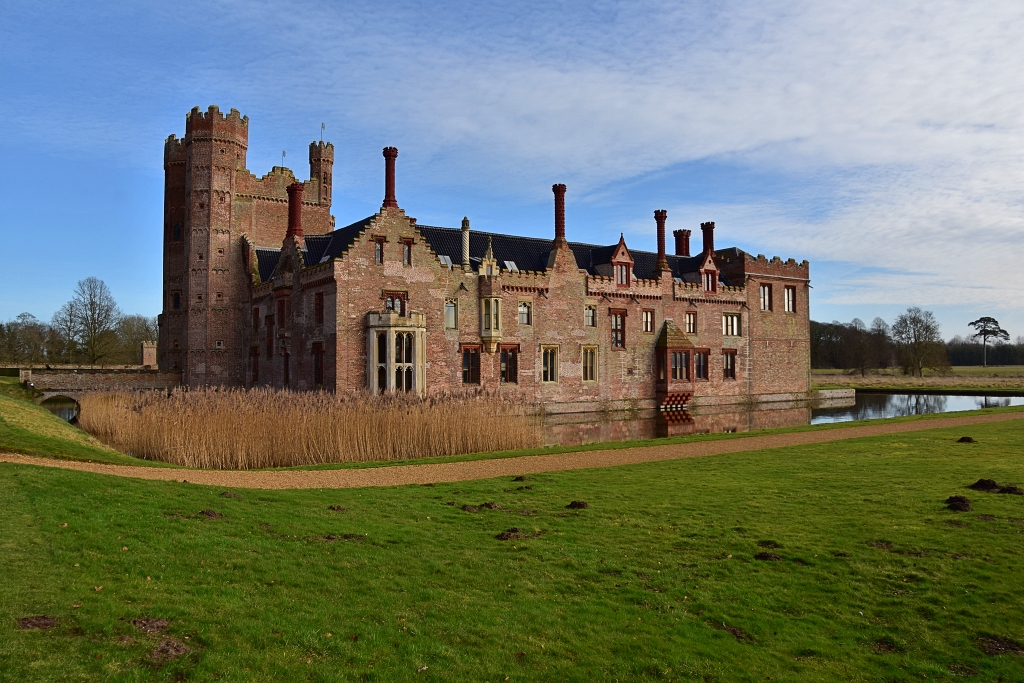 Oxburgh Hall © essentially-england.com
Oxburgh Hall © essentially-england.comA Brief
History of Oxburgh Hall and the Bedingfeld Family
Sir Edmund Bedingfeld built Oxburgh Hall in 1482 after he inherited the estate from his grandmother Margret Tuddenham. He used red brick, which at the time was very fashionable and usually only used for high status buildings, to demonstrate beyond doubt that he was the “rising star” at royal court.
King Edward IV gave permission for the Hall to include crenellations, giving it the appearance of a fortified building, and the moat added to that image of a defensible structure. However, the Hall was just the new family home, where even today - over five hundred years later - the family retains private apartments!
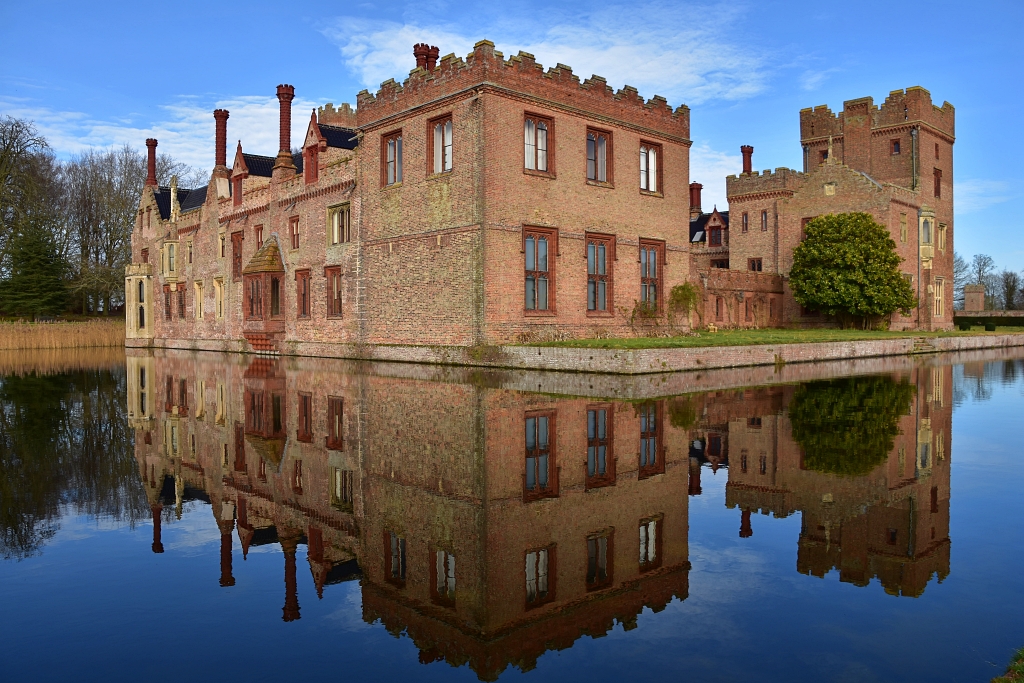 Oxburgh Hall Reflection in the Moat © essentially-england.com
Oxburgh Hall Reflection in the Moat © essentially-england.comThe Bedingfeld family were staunch Catholics and after Henry VIII became the head of the Church of England their unwavering faith and strong royal connections started to create conflict.
At first, while they supported Catholic Queen Mary I’s claim to the crown, their fortunes were in the ascent. But after Mary's death and the coronation of Queen Elizabeth I, the families’ fortunes fell. The Bedingfields refused to change their faith and suffered both financially and politically.
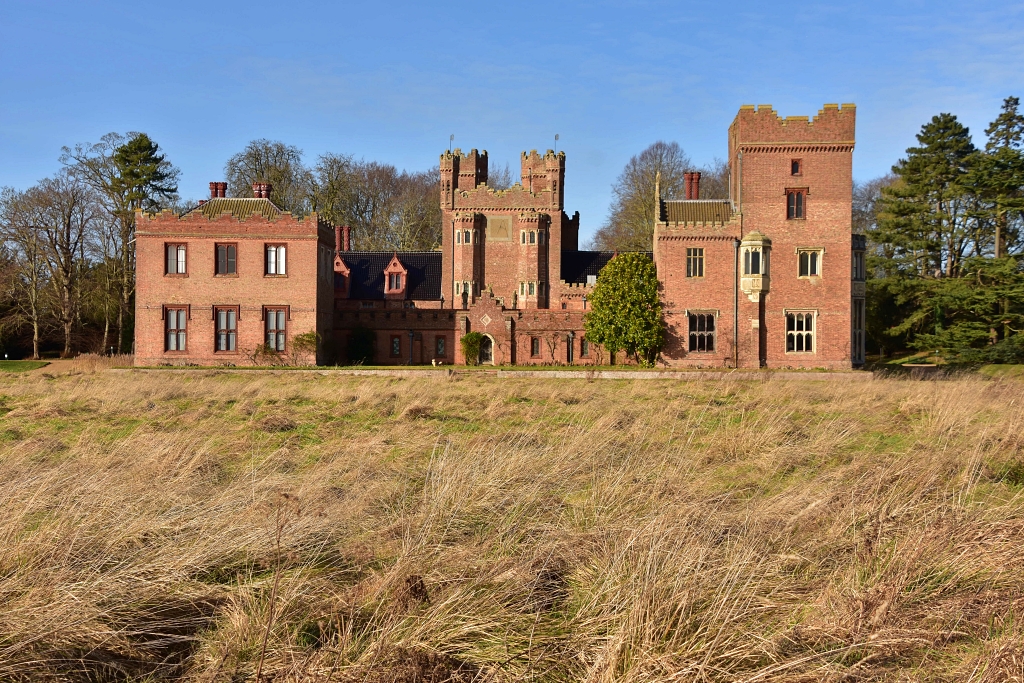 The Back of Oxburgh Hall © essentially-england.com
The Back of Oxburgh Hall © essentially-england.comThe late sixteenth century was a dangerous time for Catholics. The Act of Uniformity in 1559 forbade Catholic Mass, priests were tried and executed, and families who sheltered Catholic priests were imprisoned. The whole Catholic community became a secret society, worshipping in private and secrecy. Many built hiding places, or priest holes, to keep the itinerant priests safe from the crown's men. During the period of persecution, the Bedingfeld family was fined with high taxation, and barred from royal court and education.
The fortunes of the Bedingfeld family continued to wax and wane depending on whether the crown of England supported or opposed the Catholic faith. Further troubles arose during the Civil War, as Sir Henry Bedingfeld and his sons fought for the Royalists. Sir Henry spent two years imprisoned in the Tower of London for his troubles and Oxburgh Hall was raided, and the east wing partially burnt down. By 1660, when King Charles II reclaimed the crown, the Hall was uninhabitable.
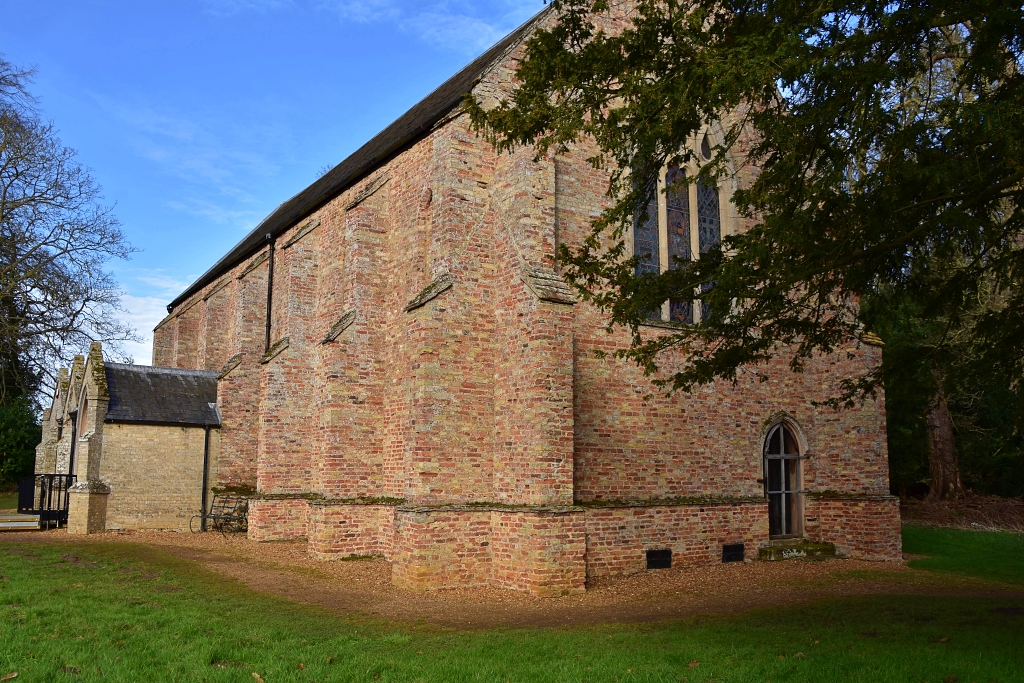 The Family Chapel © essentially-england.com
The Family Chapel © essentially-england.comIn the late seventeenth century, Sir Harry Bedingfield refurbished the Hall and converted it once more into a family home. But that good fortune lasted just over one hundred years. when the family moved away and rented the Hall to tenants. By 1825, a building surveyor classified Oxburgh Hall as only fit to demolish.
The 6th Baronet, Sir Henry Bedingfeld, and his wife Margaret rectified this sad state of affairs. They lavished her dowry and inheritance on the Hall and appointed architect J.C. Buckler to renovate the building in a Gothic Style, which is much of what we see today.
Even so, the Hall fell into ruin again and was saved from demolition by Sybil, Lady Bedingfeld, and Violet and Frances Hartcup who managed to raise £5,000 to save the Hall, which in 1952 was given to the National Trust.
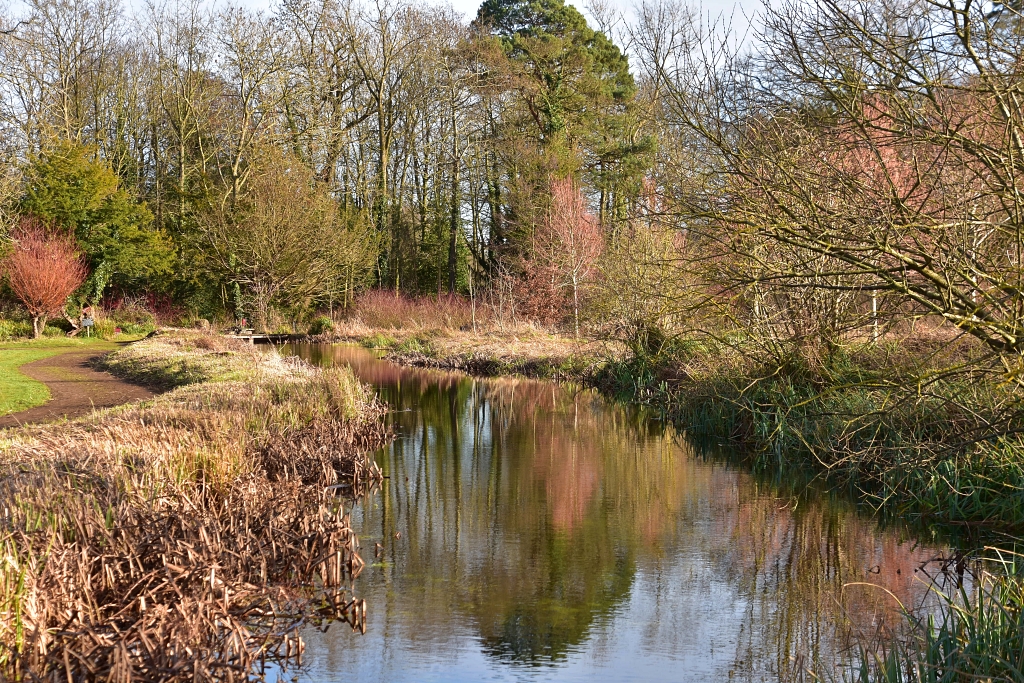 Oxburgh Hall Gardens © essentially-england.com
Oxburgh Hall Gardens © essentially-england.com
A Tour of Oxburgh Hall
From the courtyard the Hall tour enters the building through beautiful wooden doors. This entrance, and the South Corridor were built during the 1860’s. On display in the corridor are some of the more interesting attic findings discovered during the “Raise the Roof” project from a few years ago.
The Saloon
The saloon is resplendent with its red wall covering and large red rug. This grand room was used as a painting gallery and reception room. Unusual for a Catholic family, but several of paintings on display are portraits of Protestant monarchs!
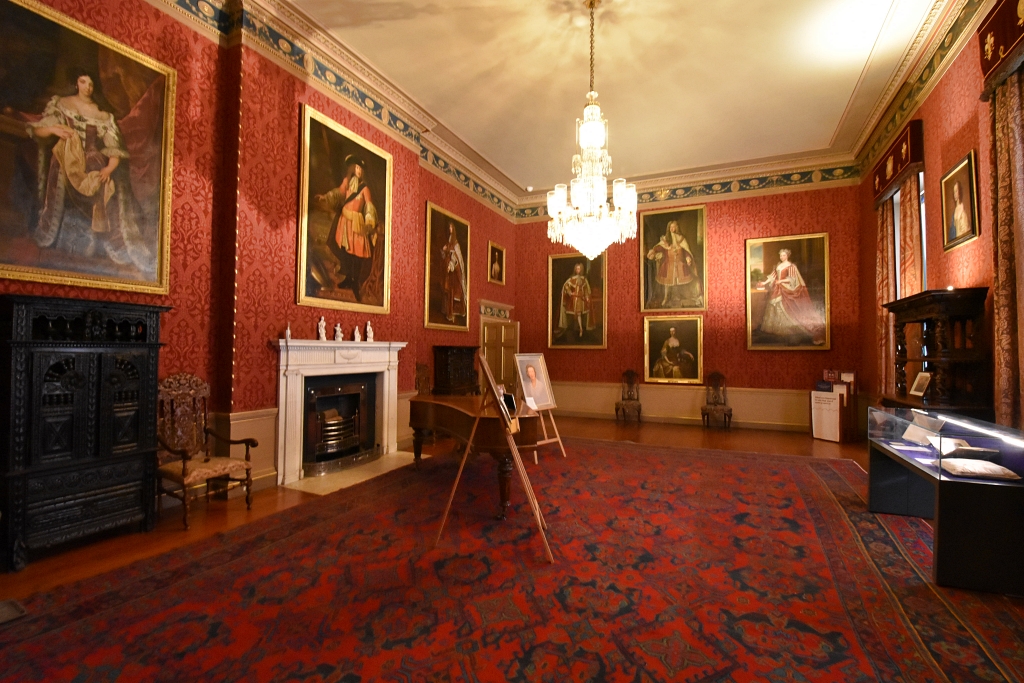 The Saloon © essentially-england.com
The Saloon © essentially-england.comThe Drawing Room
Leaving the saloon, the tour took us into the drawing room. The walls are pale blue in colour and the ceiling has decorative wooden panelling. The design of the room is very uniform and there are fake doors in the walls to keep the room looking symmetrical. On display in this room is an eighteenth-century Jacobite Glass which is believed to have belong to the 3rd Baronet.
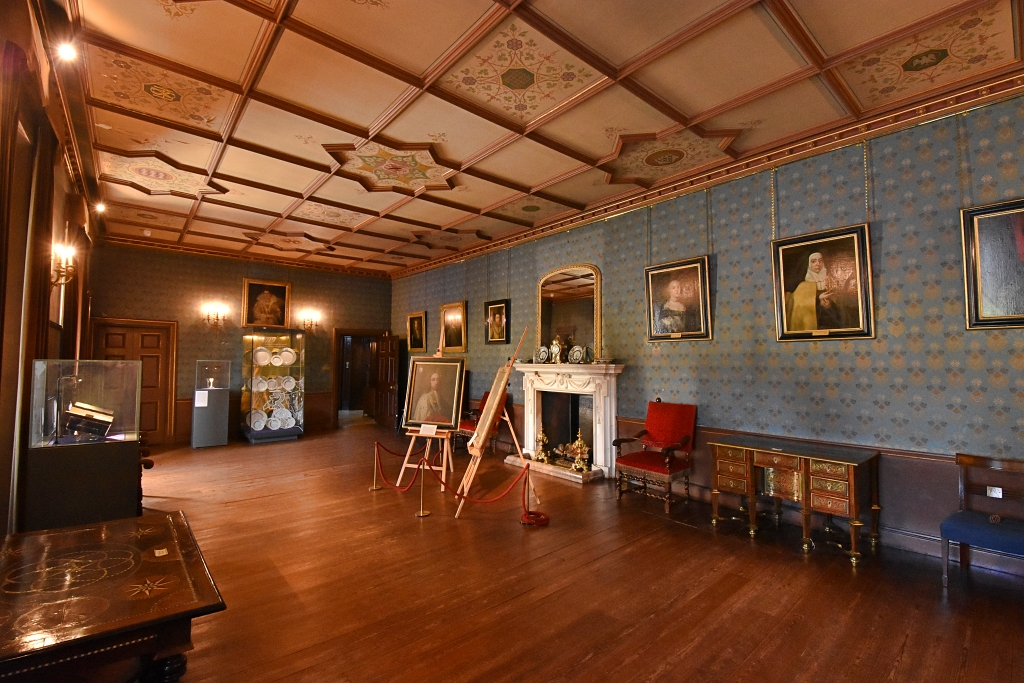 The Drawing Room © essentially-england.com
The Drawing Room © essentially-england.comSupporters of King James III would have used these special glasses and raised a toast to the King while passing their glasses over a bowl of water, representing the King in exile in France. The glasses were engraved with secret symbols displaying their support of the King.
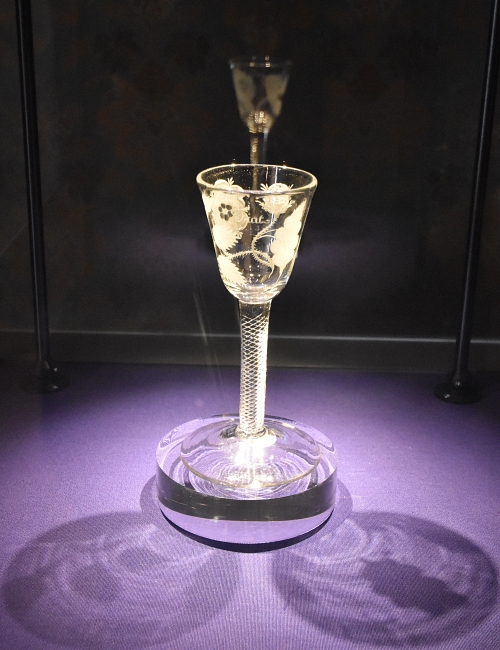 Jacobite Glass © essentially-england.com
Jacobite Glass © essentially-england.comThe West Stairs
Although the tour only passes the West Staircase, there are enough paintings on view to demonstrate the Bedingfeld family’s support of the Royalists during the Civil War. Also, note the decorative leather wall hangings. These date back to the early 1700’s, but apparently weren't put up until around one hundred years later!
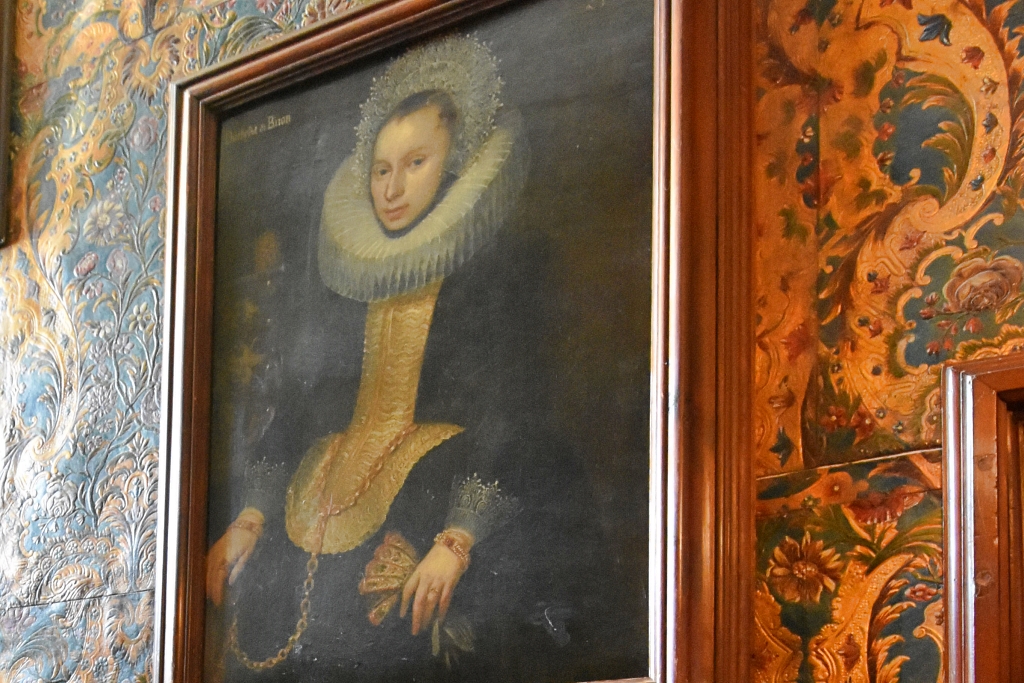 The West Stairs © essentially-england.com
The West Stairs © essentially-england.comThe Library
Probably our favourite room was the atmospheric library. This room just oozed charm and the walls were adorned with wonderfully carved oak bookshelves full of books. I would have loved to have sat here in front of a roaring fire reading a book, with perhaps some peaceful classical music in the background!
Before leaving the library, take a look at the exit door, or even ask the room steward to close it, as when closed it fits in with the bookshelves around it and from a distance you wouldn’t know there is a door there.
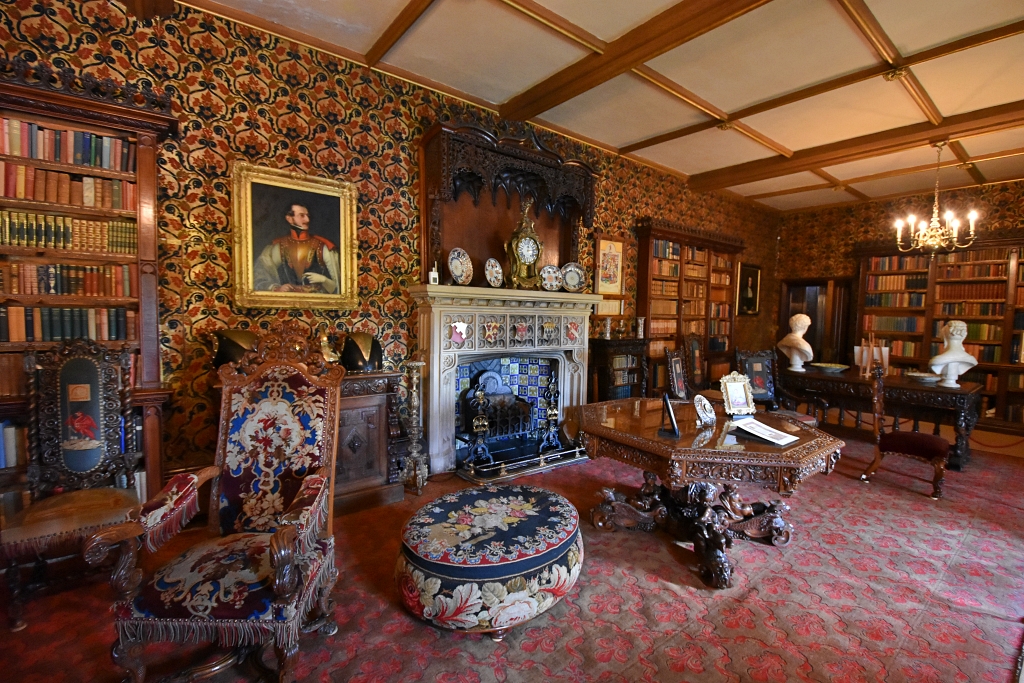 The Library © essentially-england.com
The Library © essentially-england.comThe Dining Room
With its massive, dark wood furniture, the dining room is rather oppressive. The serving table is a love-it-or-hate-it thing and is actually made up from three pieces of furniture, the back being part of a bed!
In the display cabinets around the room, you can read letters from Kings and Queens to the Bedingfeld family. One letter that drew our attention was from King Henry VIII who asked the family to ensure that Katherine of Aragon was cared for. Sir Edmund and Lady Bedingfeld even accompanied Katherine’s coffin to Peterborough Cathedral for her funeral on 26th January 1536. The family still hold an annual commemoration service for Katherine of Aragon in the cathedral!
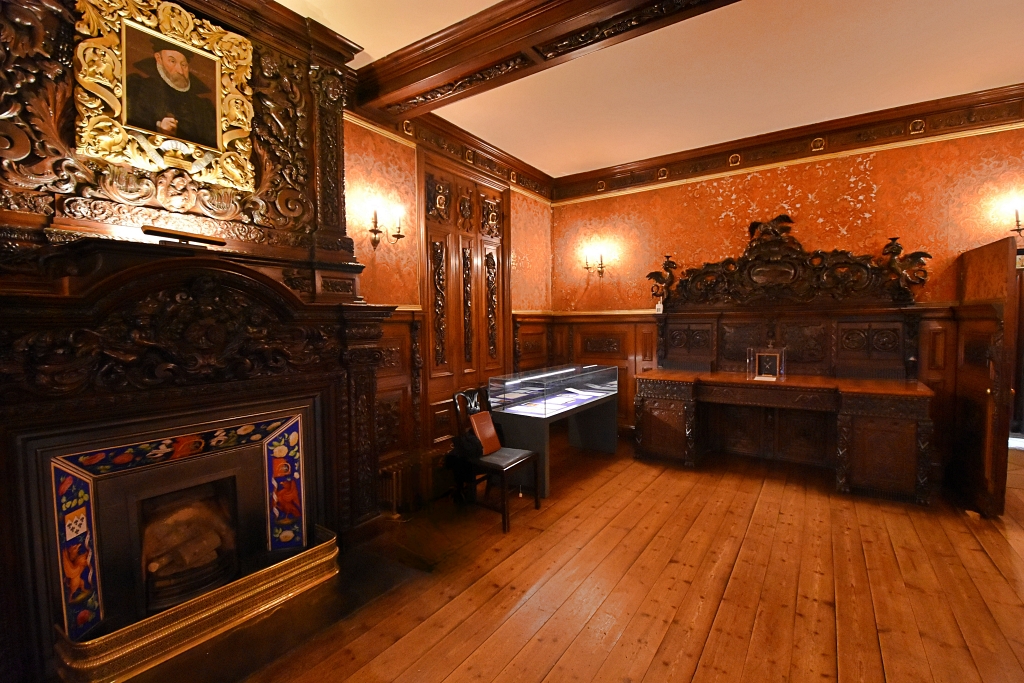 The Dining Room © essentially-england.com
The Dining Room © essentially-england.comThe North Stairs
The tour climbs the sixteenth century wooden North Staircase where the walls are again decorated with leather hangings. There are some lovely portraits of the Bedingfeld family and other dignified individuals.
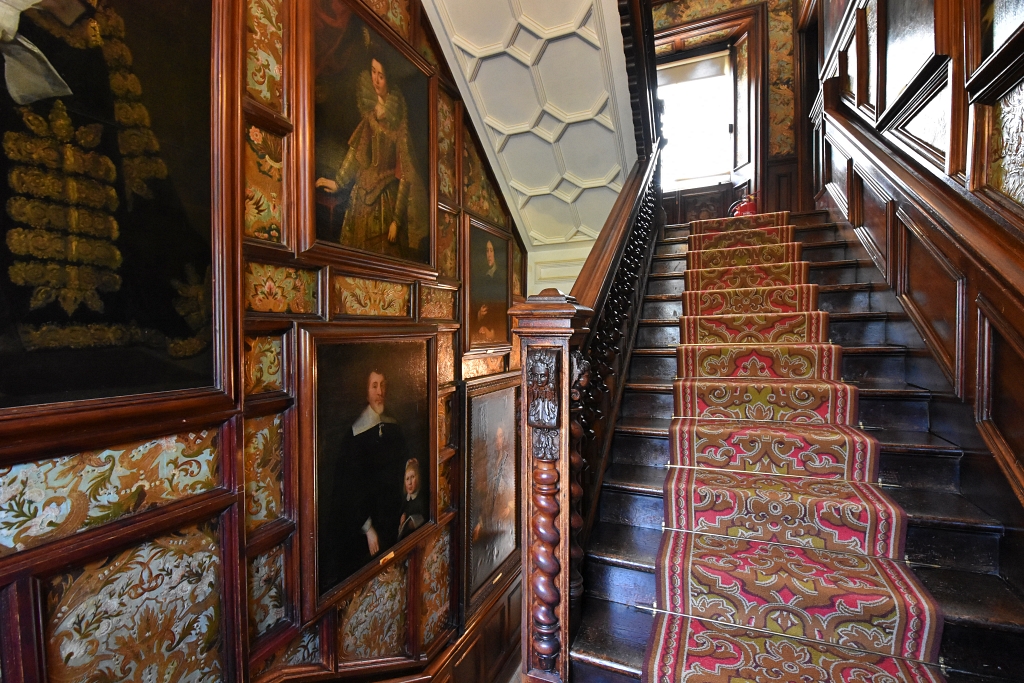 The North Stairs © essentially-england.com
The North Stairs © essentially-england.comThe North Bedroom
The North Bedroom was the bedroom of Frances Greathead up until 1985. She, her mother Sybil Bedingfeld, and Violet Hartcup are recognised for saving Oxburgh Hall from being sold and demolished in 1951.
The room contains mainly nineteenth century furnishings, including a large dark wooden bed whose canopy is secured through the ceiling!
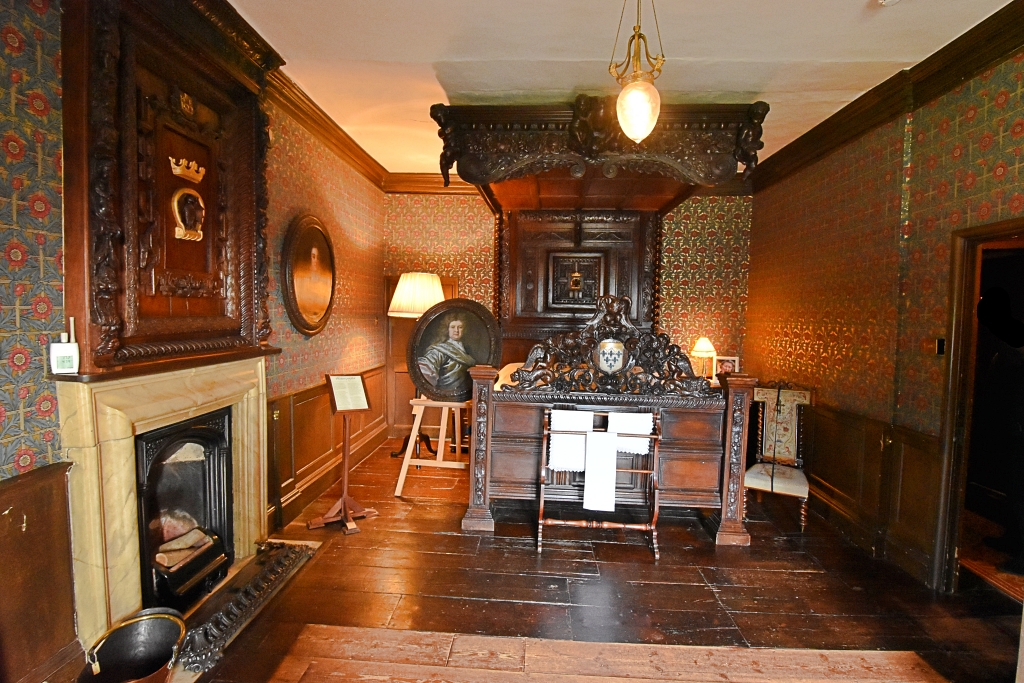 The North Bedroom © essentially-england.com
The North Bedroom © essentially-england.comThe Oxburgh Hangings
Queen Elizabeth I deemed Queen Mary of Scots a threat to her crown and had the Earl of Shrewsbury hold her captive between 1569 and 1584. It was during this period of captivity that the Oxburgh Hangings, a collection of embroidered panels, were created by Mary, Queen of Scots and Elizabeth, Countess of Shrewsbury (Bess of Hardwick).
The hangings came to Oxburgh through the marriage of Mary Browne, of Cowdray Park, and Sir Richard Bedingfeld in 1761. Evidence suggests that the hangings were used on the bed in the King’s Room until they were sold in the 1950’s. The Victoria and Albert museum now own the hangings and loan them to the National Trust to display them at Oxburgh Hall.
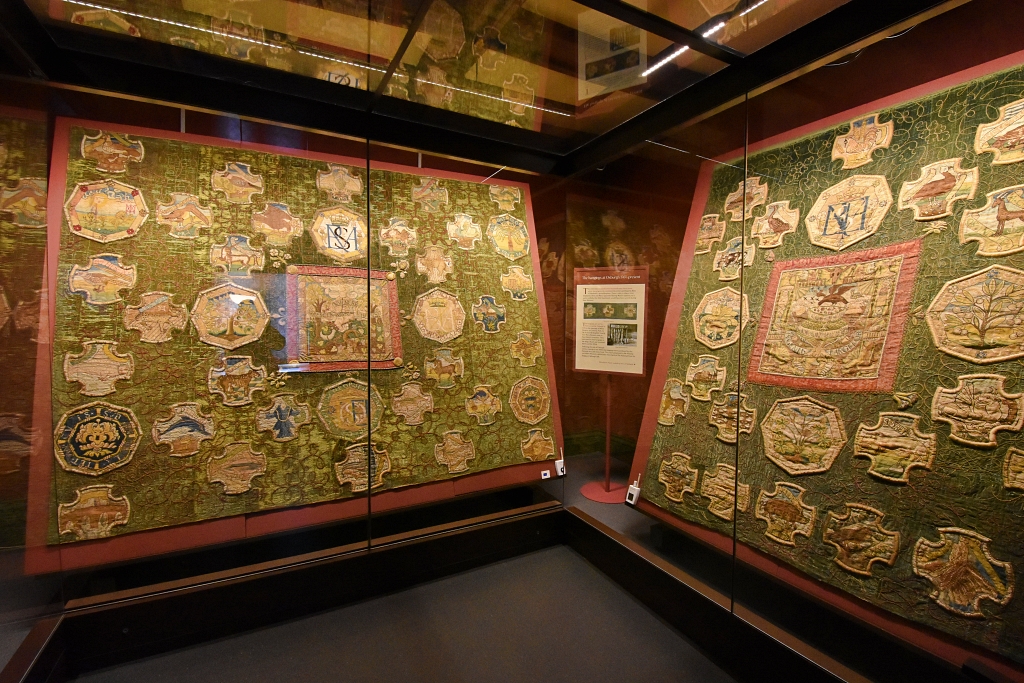 The Oxburgh Hangings on Display at Oxburgh Hall © essentially-england.com
The Oxburgh Hangings on Display at Oxburgh Hall © essentially-england.comThe Gatehouse
The magnificent medieval brick-built Gatehouse is open on occasions for visitors to view the King’s Room and Priest Hole. The King’s Room is named after King Henry VII who made a royal visit in 1498.
The room was decorated during the nineteenth century when the family had the romantic idea of recreating the room Henry VII may have seen. The walls have fake Tudor style wood panelling under hanging fifteenth century Flemish tapestries, whilst heraldic flags drape the windows.
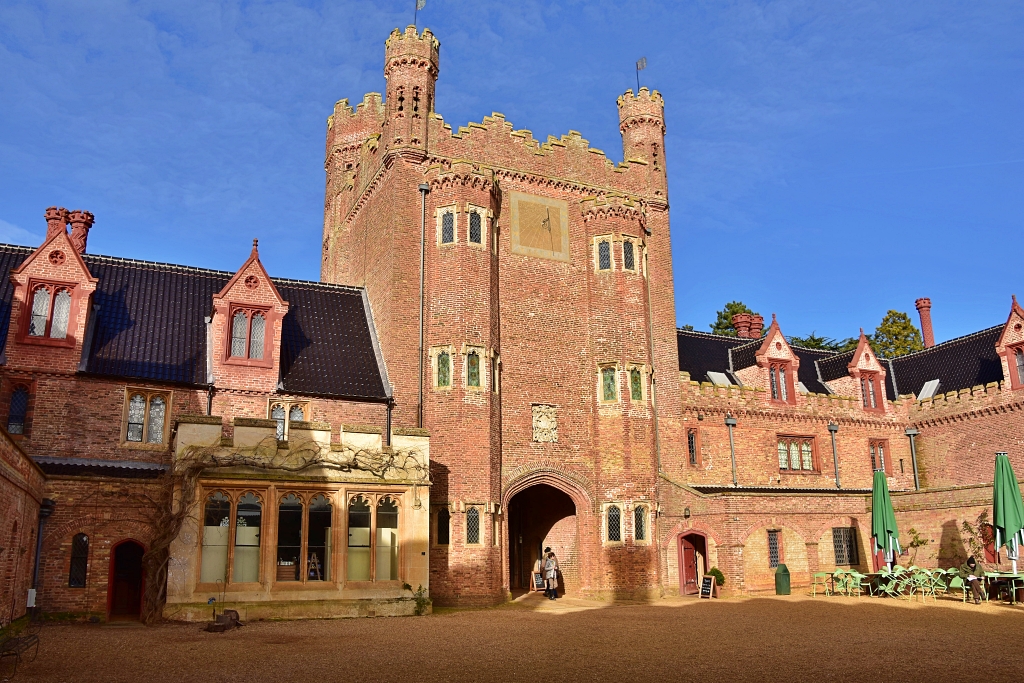 Oxburgh Hall Gatehouse Viewed from the Courtyard © essentially-england.com
Oxburgh Hall Gatehouse Viewed from the Courtyard © essentially-england.comExploring the Oxburgh Estate
The National Trust have created three waymarked walks around the estate from around one mile up to 2.5 miles long. When we visited in early February there was also a short Snowdrop Walk which took you through the woods to see the best of the Snowdrops.
We had planned to explore more of the estate but found the River Walk flooded and the Woodland Walk too boggy, even with stout waterproof walking shoes. If you’re visiting after wet weather and want to explore further afield, it may be wise to bring a pair of wellingtons!
For more information on opening times and events please visit the National Trust website.
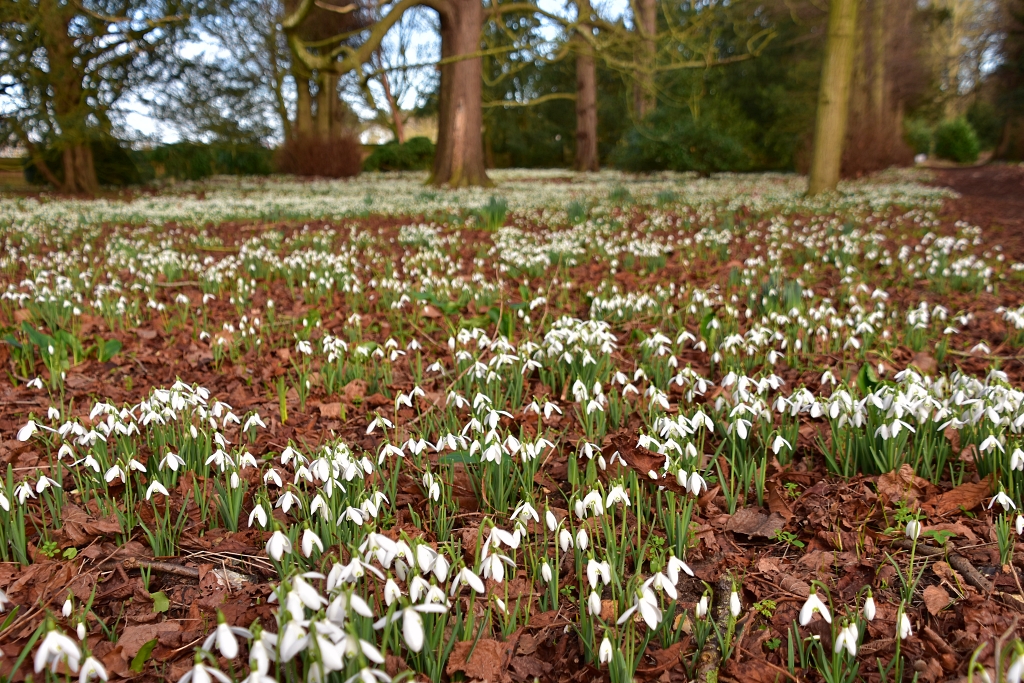 Woodland Walk and Snowdrops © essentially-england.com
Woodland Walk and Snowdrops © essentially-england.comHoliday Cottage on the Oxburgh Estate
If you fancy staying on the Oxburgh Estate, then the National Trust offer the Oxburgh Chapel Lodge for holiday rents. This stylish nineteenth century lodge sits in its own garden within the estate and will allow you to explore the landscape after all visitors have left.
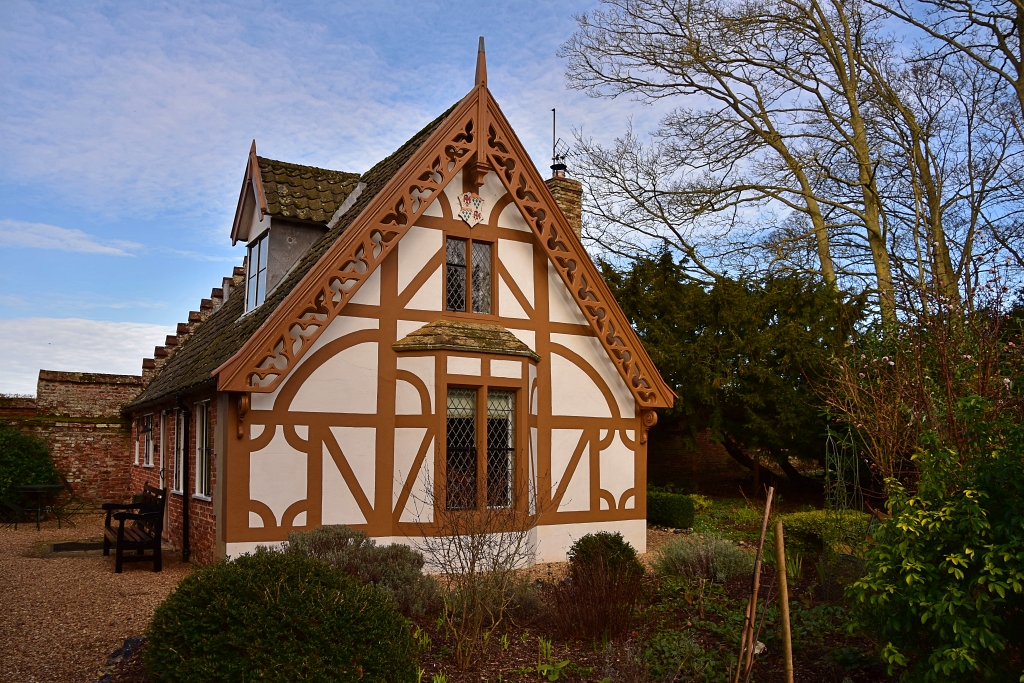 Oxburgh Chapel Lodge © essentially-england.com
Oxburgh Chapel Lodge © essentially-england.comAre You Planning to Visit Norfolk?
Where You Could Stay
We love this part of the country and were really sad when the holiday cottage we liked so much in Blakeney became a private home. However, it did make us research the area again and try something new - Honey Barrel Cottage in Stiffkey. Again, we were close to the salt marshes and could explore new parts of the north Norfolk coast path. So my selection of holiday cottages are spread along our favourite parts...
To see other holiday cottages in Norfolk click here. Or check out holiday cottages in other parts of England by clicking here.
Or you could try a family orientated holiday resort in Lincolnshire as there's plenty of choice...
If you need to find a hotel, then try one of these search platforms...
What You Could See and Do
Are you feeling in need of a holiday yet? Here are a few more pages that might give you ideas...
- See the seals at Blakeney Point
- Visit Castle Acre and discover its Priory and Norman castle
- Go crabbing at Cromer or Wells-next-the-Sea
- Walk around the salt marshes between Stiffkey, Blakeney and Cley-next-the-Sea and try to identify the different birds
- Take a walk around Sheringham Park and enjoy the colours of the rhododendron bushes
- Or you could try our Things to do in Norfolk page...
For more days out in Norfolk ideas return from our Oxburgh Hall page to the Norfolk page.
